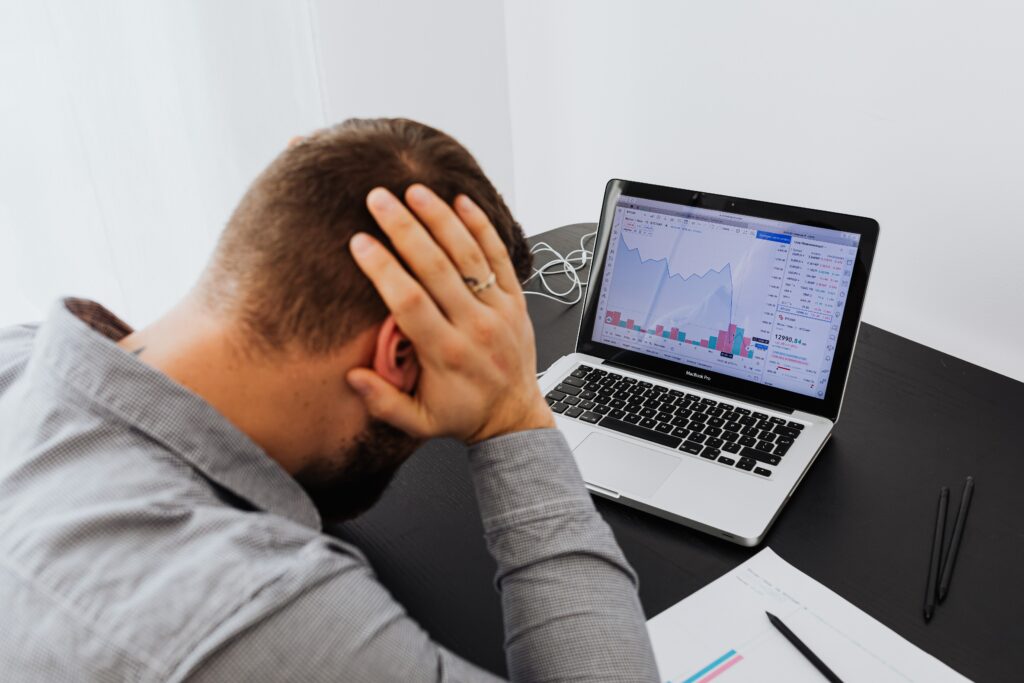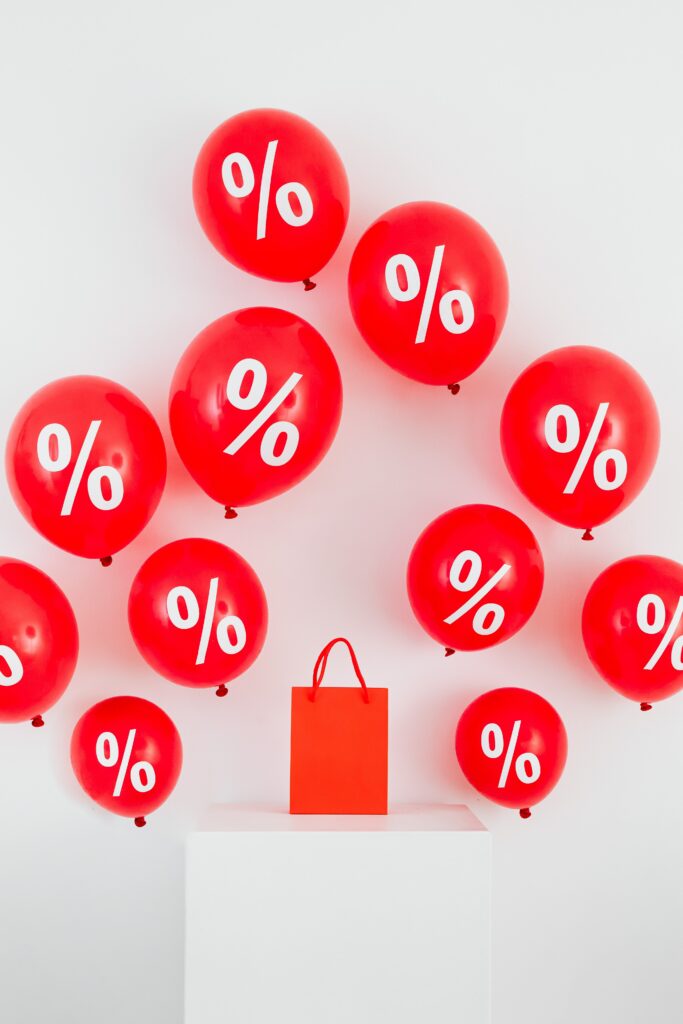To fully understand the state of the economy and detect possible signs of recession, economic indicators are an essential resource. These indicators offer insight into economic development and help investors and entrepreneurs make sound choices.
In this article, we will take a look at the major economic indicators and how they can be utilized to find preliminary indications of a recession.
Gross Domestic Product (GDP)
The most widely used indicator of economic activity is likely gross domestic product (GDP). It computes the total value of goods and services produced inside the borders of a nation over a specific time frame.
Economic growth is frequently measured by GDP, and a recession is typically defined as two consecutive quarters of weak GDP growth.
Looking at the growth rate is essential when evaluating GDP. A slowing or deceleration in the growth rate of GDP is one sign that the economy might be headed for a recession. In addition, any decline in GDP is a key indicator of an impending economic downturn because it shows that the economy is contracting. Many advanced economies have been struggling in recent years to reach a growth rate of 2%. A recession may be on the horizon if growth falls below this level.
Employment

Employment is another important factor in evaluating a country’s economy. The unemployment rate is the share of the labor force that is unemployed but looking for work. If the unemployment rate rises, it usually indicates a worsening economy and a possible recession.
With that said, it is important to note that many other factors including population size, labor market participation and demographic changes also have an impact on the unemployment rate. Therefore, unemployment rate should not be the only factor you consider when assessing recession risk. It is important to consider many other indicators as well to get a complete picture of the economic situation.
Consumer Confidence
An index of consumer confidence is used to evaluate people’s outlook on the current and future economic
climate. If consumer confidence dips, it may signal that people are less hopeful about the economy and may be reluctant to make large investments, like buying a house or a car. This economic fear or hesitancy could lead to an overall decrease in economic activity, which is another key factor to evaluate when looking for signs of an upcoming recession.
Inflation
Inflation measures the rate at which the cost of goods and services are increasing. A significant rate of inflation could suggest a growing economy, while a low rate of inflation might portray an economy that is weakening.
It is also worth noting that a recession is usually defined as a period of persistently rising inflation, often referred to as stagflation. The US Federal Reserve considers 2% inflation to be healthy for the economy. However, if inflation exceeds 3% or even 4% for an extended period of time, this may indicate that the economy is overheating and a recession may be imminent. This is because high inflation leads to higher interest rates, which in turn slows economic growth, causing a recession. Also, during a recession, inflation can technically decrease due to a decrease in economic activity. Once again, be sure to combine inflation with other indicators to get a well rounded understanding of the economy.
Nevertheless, it is essential to remember that inflation can be swayed by a variety of elements, like variations in energy prices, and may not always be a dependable signal of the economy. Moreover, and perhaps most importantly in today’s economy, if the inflation rate is too high, it may signify an upcoming economic slump. Explore ways investors can hedge against inflation.
Interest Rates

Interest rates have a significant impact on economic activity. The Federal Reserve uses interest rates to control and stabilize the economy. Low interest rates make borrowing money cheaper and more accessible to consumers and businesses, which promotes economic growth. Raising the cost of borrowing by raising the interest rates tends to impede growth. In order to slow down the economy and combat inflation, the Fed may decide to raise the interest rates. This might indicate that they anticipate an upcoming recession or downturn in the economy.
In addition to setting the interest rate, The Federal Reserve controls the economy using a variety of other tools. For instance, they might use open market operations to buy or sell securities, or alter the overall money supply in efforts to stabilize the economy. However, when looking for indicators of upcoming recession, it is important to check if the Federal Reserve is raising interest rates.
Other Indicators Of A Recession
Some additional indicators to consider when gauging the health of the economy are, housing starts, industrial production, and retail sales. These indicators provide valuable insight into specific areas of the economy and can help to confirm or refute signals of recession from other indicators. Housing starts measure the number of new residential construction projects that are being started. An increase in housing starts can indicate economic growth. Industrial production measures the output from factories, mines, and utilities. Higher production is a sign of a strong economy. Similarly, retail sales measure the total receipts of goods sold to the public, and can be another important signal of consumer confidence.
Another indicator to consider looking into is the yield curve. The yield curve is a graph that shows interest rates for bonds with different maturities. Generally, the yield curve slopes upward, meaning that longer bonds pay higher interest than shorter bonds. However, when the yield curve inverts, it means that the interest rate on short bonds is now higher than long bonds, which can suggest a possible recession.
Investors tend to be more willing to accept lower long-term investment returns if they believe the economy will be strong in the future. But, when the yield curve inverts, it can be a sign that investors have become more pessimistic about the future state of the economy and are shifting investments into safer, shorter-term bonds.
Finally, it is also important to keep an eye on global economic indicators. Because the global economy is interdependent, a downturn in one country can affect the rest of the world. For example, a recession in China could lead to lower demand for goods and exports to other countries, which would harm the economies of countries that depend heavily on those exports. Developments in global stock markets can also reveal the overall state of the world economy.
Planning for Recession

When anticipating a recession, it’s important to weigh your options for protecting your retirement savings. One option is a self-directed 401k plan. This strategy allows you to spread your money across a wider range of assets, including real estate, small businesses and alternative investments, which can improve the diversification of your savings and potentially increase their stability during economic downturns.
Roth IRAs, traditional IRAs, and annuities are some other retirement savings options to consider. Each of these has its own set of benefits and drawbacks, and it’s important to research and understand the various options before making any decisions.
Although no one can predict with certainty when a recession will occur, it is always a good idea to have a plan in place for when it does. This might entail setting up an emergency fund, clearing your debt, and diversifying your investments as soon as you have the chance. A financial advisor can also assist you in navigating the various options and coming to the best decisions for your particular situation.
Conclusion
By keeping an eye on GDP, employment, consumer confidence, inflation, and other indicators, you can gain important insight into the state of the economy and take the necessary action to safeguard your savings and to make sound retirement plans.





